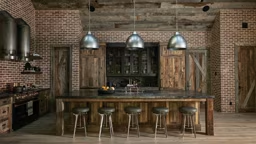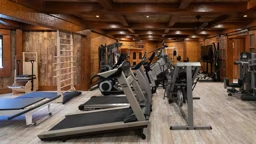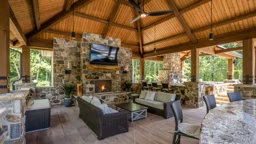
In a recent survey conducted by the National Association of Home Builders, the pantry emerged as the kitchen feature most desired by buyers in the market for a new home — and it stands to reason. A pantry optimizes your kitchen layout by consolidating everything in one handy location.
Pantry Styles: The Basics
Pantries come in three basic configurations: reach-in, pull-out and walk-in. All have their pros and cons, and will work to suit different spaces and home styles.
Reach-In
The ideal reach-in pantry is shallow enough that all items are visible and easy to reach. The maximum depth of a fixed pantry shelf should be 16 inches, but 14 inches is better. (Anything deeper than 16 inches requires a pull-out shelf.) Keep in mind that pull-out shelves are usually used for the bottom half of the pantry; Lazy Susans should be used above eye-level. A Lazy Susan turntable brings anything at the back of the pantry to the front where it can be seen at the flick of the wrist.
Pull-Out
A pull-out pantry is a reach-in pantry turned on end and inserted into a cabinet. A door panel is then attached to the front and the pantry operates like a drawer on its side. If it is accessible from both sides, it can be as wide as 24 inches. If it’s accessible from just one side, 16 inches is the maximum width. A pull-out pantry is not as convenient to use as a reach-in pantry since, in order to get to the items stored, you must first extend the pantry, then push it back into place when you are done. But in small kitchens where space is at a premium, it may be a smart pantry solution that provides plenty of storage space.
Walk-In
A walk-in pantry is usually a small room, essentially a closet, for storing food and other kitchen needs. A walk-in is great for storing large bulk items, but because it is sometimes remotely located, it can be inconvenient to use for daily food storage.For that reason, many kitchens with walk-in pantries also include a smaller, more convenient pantry inside the kitchen that is re-stocked periodically. The minimum walkway or aisle width in a walk-in should be 36 inches, and shelves should be no deeper than 16 inches.
The shelf just above eye level should be no deeper than 14 inches and the one above that just 12 inches. This step back allows you to better see what’s on the upper shelves. Also, incorporating countertops and cabinets in an oversized walk-in is a great idea for storing bowls, utensils and other seldom-used kitchen appliances (stand mixers, blenders, etc.).
See also Timber Home Kitchen Design Tips & Inspiration
Pantry Placement
As important as convenience, functionality and efficiency, your pantry’s location is a crucial design element in your kitchen.
Prep Space
Locating your pantry reasonably close to the food prep area (the general rule is no more than 48 inches) is usually enough to create a functioning space, and being flexible about location also makes it easier to take into account some other important factors affecting placement. Many kitchen designs locate a tall pantry and refrigerator at opposite ends of the room. From a purely aesthetic point of view, this is good design because the height and bulk of these two large features balance each other. But, from a practical point of view it is better to place the refrigerator fairly close to the pantry so that multiple trips are not required to gather the ingredients for a meal.
Landing Zone
The landing zone is a place to set bags of groceries while they are being loaded into the pantry, and every pantry should include or be adjacent to a countertop-height landing zone. For refrigerators, the National Kitchen & Bath Association recommends a landing zone of 15 inches wide on the handle side of the refrigerator or across from the refrigerator, but not more than 48 inches away. Stick to these same guidelines for a functioning pantry space.











